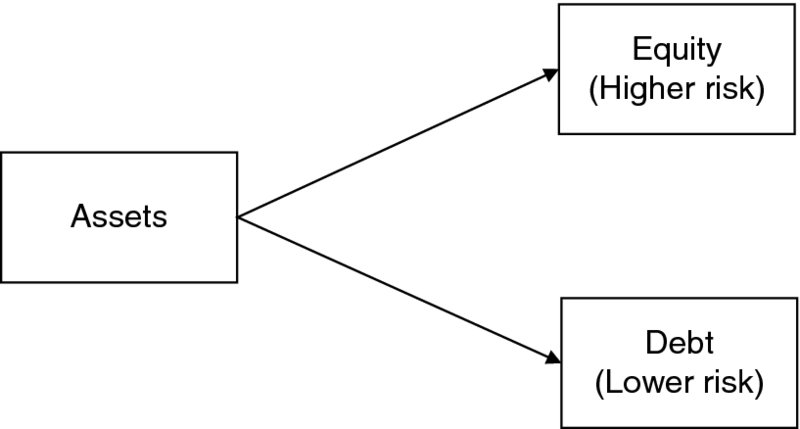CHAPTER 25 Introduction to Structuring
In the context of alternative investments, structuring is the process of engineering unique financial opportunities from existing asset exposures. An example of a structured product is an investment specially designed to provide downside protection against losses while offering potential profits through exposure to increases in the value of an index or an underlying portfolio.
25.1 Overview of Financial Structuring
Financial structuring enables different investors to hold claims with different risk exposures (or other characteristics) from the same underlying assets. This section provides an overview. The most common major structuring of assets is the typical capital structure of the corporate form of business organization. This capital structure partitions the risks of the corporation's underlying assets into claims of relatively low risk (e.g., debt) and relatively high risk (equity), as illustrated in Exhibit 25.1.

Exhibit 25.1 Capital Structure as Creating Structured Products
The typical capital structuring of a business enterprise into debt and equity claims captures the most fundamental concepts and motivations to financial structuring: tailoring the risks of securities to the risk preferences of investors.
The capital structure of a traditional operating firm, illustrated in Exhibit 25.1, is a very common application of the ...
Get Alternative Investments: CAIA Level I, 3rd Edition now with the O’Reilly learning platform.
O’Reilly members experience books, live events, courses curated by job role, and more from O’Reilly and nearly 200 top publishers.

